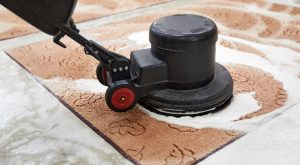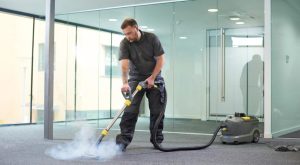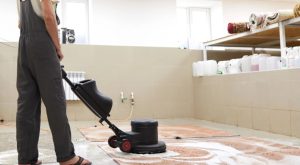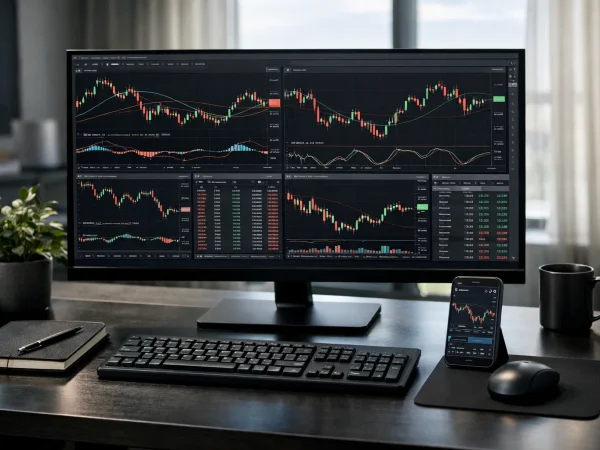
The Ultimate Guide to Professional Carpet Cleaning: Beyond the Surface
Carpets harbour up to 100,000 dust mites per square metre alongside allergens, bacteria and microscopic pollutants that standard vacuuming leaves behind.
These contaminants significantly impact indoor air quality and can trigger respiratory issues in sensitive individuals.
This guide examines the science behind professional cleaning techniques, health benefits of contaminant removal, and environmental considerations of different cleaning methods.
We’ll explore why professional approaches achieve 85% greater allergen reduction than household methods and how regular deep carpet cleaning extends carpet lifespan by up to 50% while creating measurably healthier living environments.
The Hidden World of Carpet Contamination

Beneath your carpet’s surface exists a microscopic ecosystem invisible to the naked eye. Each square metre can harbour up to 100,000 dust mites producing allergens that trigger respiratory issues.
Standard vacuums remove only 60-70% of these contaminants, leaving behind substantial reservoirs of allergens and microorganisms.
Hidden particles include skin cells, pet dander, pollen, and environmental pollutants that become embedded within carpet fibres. Over time, this accumulated matter creates an ideal breeding ground for bacteria and mould.
“What appears visibly clean may still contain millions of microscopic contaminants compromising indoor air quality.”
The Science Behind Professional Cleaning Methods
Professional carpet cleaning utilises specific chemical and physical processes to remove deeply embedded contaminants.
Hot water extraction employs temperatures between 65-93°C to break molecular bonds between soil and fibres, while high-pressure application forces cleaning solution deep into carpet pile.
Enzymatic cleaning agents contain biological catalysts targeting specific stain types. Protease enzymes break down proteins in blood and food residues, while lipase enzymes dismantle fatty compounds, converting complex stains into simpler compounds for easier extraction.
pH-balanced solutions offer another scientific approach. Acidic solutions tackle alkaline soils like mineral deposits, while alkaline cleaners remove acidic stains such as coffee and wine.
Technicians select appropriate pH levels based on both stain type and carpet material.
Environmental Considerations in Professional Carpet Cleaning
Traditional carpet cleaning often utilises synthetic surfactants and phosphates that potentially contaminate waterways, while consuming 20-50 gallons of water per home.
In response, the industry has developed sustainable alternatives using biodegradable, plant-based cleaning agents derived from renewable resources like citrus or coconut.
Water consumption has also been addressed through technological advancements.
Low-moisture systems can reduce water usage by up to 80% compared to traditional methods, significantly decreasing environmental impact while maintaining cleaning effectiveness.
When selecting a carpet cleaning service, environmentally conscious consumers should enquire about green practices, including chemical formulations, water reclamation systems, and energy-efficient equipment to ensure their cleaning choices align with broader sustainability goals.
Understanding Different Carpet Types and Their Cleaning Needs

Carpet composition determines appropriate cleaning methods. Synthetic nylon carpets withstand intensive cleaning like hot water extraction and tolerate temperatures approaching 120°C. Polyester and olefin carpets require gentler cleaning below 60°C to preserve fibre integrity.
Natural fibre carpets demand specialised care. Wool contains microscopic scales that can shrink when exposed to excessive moisture, making dry cleaning methods with minimal water essential.
Carpet pile structure further influences cleaning requirements—low-profile Berber carpets may experience ‘wicking’ (resurfacing stains), while plush carpets with dense fibres retain more soil and need thorough pre-treatment.
Each carpet type presents unique challenges requiring tailored professional techniques to achieve optimal results without causing damage.
Professional Carpet Cleaning Methods Explained
Professional Cleaning Methods Comparison
| Method | Cleaning Depth | Drying Time | Best For | Limitations |
| Hot Water Extraction | 97% of carpet pile | 6-12 hours | Deep cleaning, sanitizing, heavy soiling | Requires longer drying time |
| Dry Cleaning | Upper 70% of pile | 1-2 hours | Maintenance cleaning, areas requiring quick access | Less effective on deeply embedded soil |
| Bonnet Cleaning | Top 33% of pile | 30 minutes | Surface-level cleaning, interim maintenance | Not suitable for deep contamination |
Preparing Your Carpets for Professional Cleaning
Start by thoroughly vacuuming to remove dry soil, allowing cleaning agents to target embedded contaminants more effectively.
Clear rooms of smaller items and furniture where possible. For immovable items, place protective barriers beneath furniture legs.
Identify specific concern areas for your technician, marking stubborn stains or heavily soiled sections for appropriate pre-treatment.
For homes with pets, pre-treat accident areas with enzymatic cleaners 24 hours before professional cleaning.
Several leading carpet manufacturers specifically recommend these preparation steps to maintain warranty coverage and extend carpet lifespan.
This small investment of time significantly enhances the effectiveness of professional cleaning, ensuring better results and more efficient service.
Choosing the Right Carpet Cleaning Company
Look for technicians certified by the National Carpet Cleaners Association (NCCA) or the Institute of Inspection Cleaning and Restoration Certification (IICRC).
Companies operating for five or more years have typically developed valuable expertise with various cleaning challenges.
Verify insurance coverage (ideally £1-2 million liability insurance) to protect your property.
Examine customer reviews on platforms like Trustpilot, with ratings above 4.5 stars generally indicating consistent service.
Transparent pricing policies reflect professional integrity—quality companies provide detailed quotes specifying included services and potential additional charges, helping you avoid unexpected costs while ensuring thorough cleaning.
The Professional Carpet Cleaning Process
The professional cleaning process begins with inspection to identify fibre type, soiling levels and specific concerns.
Pre-vacuum treatment removes surface debris, preventing it from becoming mud during wet cleaning. Technicians then apply pre-conditioning agents to break down soils, allowing 10-15 minutes for these solutions to work.
The main cleaning phase employs the selected method with multiple passes to ensure thoroughness, particularly in high-traffic areas.
For stubborn stains, specialists apply targeted treatments using specific formulations. Acid rinses may neutralise alkaline residues to prevent resoiling, followed by grooming to reset pile direction and accelerate drying.
Special Considerations for Stain Removal
Professional stain removal employs specific techniques for different stain types. For organic stains like food or wine, enzyme-based cleaners break down proteins and organic compounds.
Oil-based stains from cosmetics or grease require solvent-based solutions that dissolve lipids without damaging fibres.
The professional approach follows a critical sequence—identify stain type, select appropriate chemistry, control application temperature and ensure proper dwell time.
Pet stains require specialised solutions that neutralise both visible staining and odour-causing compounds, combining enzymatic action with oxidising agents that break down urine crystals embedded within carpet backing.
Long-term Carpet Care: A Holistic Approach

Top 5 indicators that your carpet needs professional cleaning
- Visible traffic patterns: darkened pathways that remain after vacuuming indicate deep soil accumulation
- Persistent odours: lingering smells that resist conventional freshening methods
- Increased allergy symptoms: sneezing, coughing, or itchy eyes when spending time in carpeted rooms
- Colour dulling: overall greyish appearance that makes carpets look older than they are
- Stain reappearance: previously treated spots that keep resurfacing after drying
Control environmental factors affecting carpet longevity—maintain indoor humidity between 40-60% to prevent mould growth, and use UV-filtering window treatments to prevent colour fading that can reduce carpet value by up to 40%.
Schedule professional cleaning at appropriate intervals—every 12-18 months for average households, but 6-9 months for homes with children, pets or allergy sufferers.
This systematic approach maximises carpet lifespan while maintaining a healthier indoor environment between professional treatments.
Conclusion
Professional carpet cleaning delivers value far exceeding aesthetic improvement. The process addresses hidden contaminants affecting both carpet longevity and occupant health.
By understanding the science of cleaning and specific needs of different carpet types, homeowners can make informed decisions that protect their investment.





